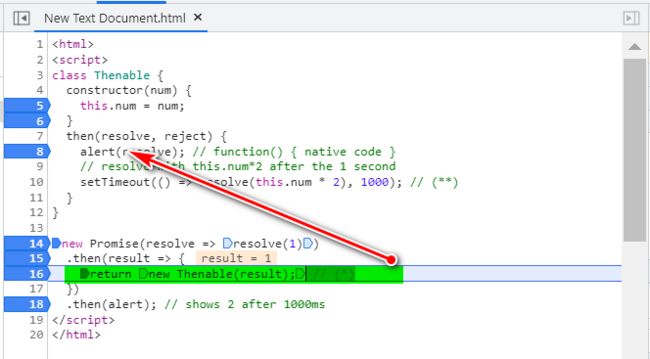- 生成对抗网络(GAN)的高级变体及在图像生成领域的创新实践
算法探索者
生成对抗网络计算机视觉人工智能
摘要生成对抗网络(GAN)自提出以来,在诸多领域取得了显著进展,尤其是在图像生成方面展现出强大的潜力。本文深入探讨了GAN的多种高级变体,如CycleGAN、StyleGAN等,详细分析它们在结构设计、训练机制上的创新之处,阐述其在生成高分辨率、多样化图像时具备的独特优势,并结合丰富的实际案例,展示这些变体在图像生成领域的卓越应用成果,为相关研究与应用提供全面且深入的参考。一、引言生成对抗网络(G
- 人工智能与网络信息技术的深度融合
鸭鸭鸭进京赶烤
学术会议人工智能AI编程ai机器人计算机视觉网络计算机网络
在当今时代,人工智能(AI)和网络信息技术正以前所未有的速度推动着社会变革。从通用人工智能(AGI)到具身智能的普及,AI不仅实现了技术上的飞跃,也在各个行业展现出巨大的应用潜力。随着技术的不断迭代,我们迎来了许多创新应用,例如AI在电子信息技术中的应用,通过算法优化与升级,显著提高了处理效率和准确性。网络信息技术同样在飞速发展。面向2030年的未来网络发展趋势表明,网络将支撑万亿级、人机物、全时
- 2953. 统计完全子字符串(将题目中给的信息进行分组循环)
娇娇yyyyyy
每日一题算法
思路:根据题目中所给的第二个信息我们可以提取到至多相差2,说明相邻字母相减的绝对值小于等于2,一共有26个字母,因此我们可以枚举有多种不同的字母,因此每个窗口的大小为m*k,即在该窗口内有m个不同的字母,每一个均出现k次,暴力滑动窗口即可(tips:最后几个点实在过不去,可能是我用multiset的原因)classSolution{public:intcountCompleteSubstrings
- Java单例设计模式(懒汉式和饿汉式)
俺是凡人很好
java设计模式开发语言
一、什么是单例设计模式概念:java中单例模式是一种常见的设计模式,单例模式的写法有好几种,这里主要介绍俩种:懒汉式单例、饿汉式单例。单例模式有以下特点:1、单例类只能有一个实例。2、单例类必须自己创建自己的唯一实例。3、单例类必须给所有其他对象提供这一实例。单例模式确保某个类只有一个实例,而且自行实例化并向整个系统提供这个实例。在计算机系统中,线程池、缓存、日志对象、对话框、打印机、显卡的驱动程
- 从零开始学习 Go 语言
九班长
Golang学习golang后端开发语言gin
Go语言(又称Golang)是由Google开发的一种静态强类型、编译型、并发型编程语言。它以其简洁的语法、高效的并发支持和强大的标准库而闻名,非常适合开发高性能的服务器端应用、分布式系统和云计算工具。本文将从零开始,详细介绍如何学习Go语言,涵盖基础语法、核心概念、并发编程、工具链和实战项目等内容。1.Go语言简介1.1Go语言的特点简洁易学:语法简洁,学习曲线平缓。高效编译:编译速度快,生成的
- 深度学习篇---对角矩阵&矩阵的秩&奇异矩阵
Ronin-Lotus
程序代码篇深度学习篇深度学习矩阵人工智能线性代数
文章目录前言一、对角矩阵(DiagonalMatrix)1.1定义1.2特性行列式运算简化1.3应用领域深度学习信号处理量子力学经济学二、矩阵的秩(RankofaMatrix)2.1定义2.2特性满秩降秩影响2.3应用领域深度学习图像压缩推荐系统控制理论三、奇异矩阵(SingularMatrix)3.1定义3.2特性秩不足行列式为零3.3应用领域深度学习正则化损失函数结构工程统计学数值计算四、跨领
- 龙芯架构适配:Qt 5.15.2 QWebEngine源码包推荐
曹勇宁
龙芯架构适配:Qt5.15.2QWebEngine源码包推荐【下载地址】Qt5.15.2QWebEngine适配龙芯LoongArch架构源码包本仓库提供了一个针对龙芯(LoongArch)架构的Qt5.15.2QWebEngine源码包,适用于UOS系统。由于标准的QWebEngine源码不支持LoongArch架构,因此需要进行适配才能在该架构的UOS系统上进行编译项目地址:https://g
- 使用 libevent 构建高性能网络应用
ScilogyHunter
常见软件库libevent事件驱动软件库
使用libevent构建高性能网络应用在现代网络编程中,高性能和可扩展性是开发者追求的核心目标。为了实现这一目标,许多开发者选择使用事件驱动库来管理I/O操作和事件处理。libevent是一个轻量级、高性能的事件通知库,广泛应用于网络服务器、代理、缓存等场景。本文将详细介绍libevent的核心概念、使用方法以及如何利用它构建高性能的网络应用。1.什么是libevent?libevent是一个用C
- 软件架构设计关键点:平衡高可用、性能、扩展性及成本的系统化实践
yinhezhanshen
程序人生系统架构
在数字化转型的浪潮中,软件系统已成为企业运营的核心支撑。从电商平台的秒杀活动到金融系统的实时交易,从物联网设备的百万级连接到政务服务的全天候响应,软件架构的设计质量直接决定了系统能否在复杂环境中稳定运行。本文将从高可用性、高性能、可扩展性、安全性、成本控制、规模承载和弹性伸缩七个维度,剖析现代软件架构设计的核心要点。一、高可用性:构建业务连续性的基石冗余设计:采用主从复制、多活数据中心架构(如
- 统一的视频动作模型
三谷秋水
计算机视觉机器学习人工智能计算机视觉深度学习机器学习人工智能
25年3月来自斯坦福大学的论文“UnifiedVideoActionModel”。统一的视频和动作模型对机器人技术具有重大意义,其中视频为动作预测提供丰富的场景信息,而动作为视频预测提供动态信息。然而,有效地结合视频生成和动作预测仍然具有挑战性,当前基于视频生成的方法在动作准确性和推理速度方面难以与直接策略学习的性能相匹配。为了弥补这一差距,引入统一的视频动作模型(UVA),它联合优化视频和动作预
- DeepSeek、Grok 与 ChatGPT 三巨头:技术架构与应用场景的全方位解析
云策量化
Deepseekchatgptdeepseekgrok
前言在当今人工智能领域,DeepSeek、Grok和ChatGPT作为语言模型的三巨头,各自凭借独特的技术架构和广泛的应用场景,在自然语言处理领域占据着重要地位。本文将对这三款模型的技术架构和应用场景进行全方位解析,以期为读者提供深入的了解和有价值的参考。一、技术架构(一)DeepSeekDeepSeek是由DeepSeek团队开发的一款大型语言模型,其技术架构基于深度学习中的Transforme
- Temu跨境新风口:2025年开店必知的账号安全指南
香菜9527
安全
近年来,Temu凭借其强大的供货链体系与超低价策略,成为跨境电商行业的新风口,吸引众多卖家入驻。随着平台竞争加剧,账号安全问题逐渐成为卖家面临的核心挑战。账号被封、资金冻结、违规操作等问题频发,轻则影响销量,重则导致店铺损失惨重。因此,了解并遵循安全运营规则,是每位卖家成功的关键。本文将为你详细解析Temu开店过程中必须掌握的账号安全知识,并提供实操建议,助你稳健运营。1.Temu账号安全为何重要
- 如何避免Bug跟踪系统混乱
管理前沿
运维人工智能大数据
流程规范化、工具集成化、沟通透明化。其中流程规范化通过明确每个环节的责任分工、标准化Bug报告和处理流程,有效减少混乱和重复劳动,确保Bug跟踪系统高效运转。企业通过数据分析发现,采用标准化流程后Bug处理效率可提升30%以上,这为软件质量控制提供了坚实保障。一、BUG跟踪系统的基本概念与重要性Bug跟踪系统是一种用于记录、管理和解决软件缺陷的工具和流程。它通过集中存储Bug报告、分类处理问题,并
- 侯捷 C++ 课程学习笔记:深入掌握 C++ 高阶特性 —— 实践与心得分享
清水白石008
C++学习笔记课程教程c++学习笔记
侯捷C++课程学习笔记:深入掌握C++高阶特性——实践与心得分享自从开始接触侯捷C++系列精品课程以来,我对C++语言有了全新的认识与深入理解。这套课程不仅系统地梳理了C++的基础知识,更从实际案例中展示了许多高阶特性和工程实战技巧。作为一名长期从事C++开发的专业人士,我深深感受到侯捷老师讲解中那种由浅入深、逻辑严密的魅力,也正是这种教学风格让我在短时间内掌握了不少难以琢磨的知识点。今天,我将结
- 探索AI模型的巅峰之战:ChatGPT、DeepSeek与Grok 3,谁才是最强?
温暖阳光阿斌
人工智能chatgpt
近年来,人工智能领域正处于一场高速迭代的革命中。大型语言模型(LLMs)如ChatGPT、DeepSeek和Grok3纷纷亮相,各展所长,为人们带来了前所未有的体验。在这场"谁是最强"的竞争中,每一方都展现出了令人惊叹的能力和独特的优势。然而,这些模型之间的差异和特点,究竟是什么?它们各自的优势在哪里?又有哪些隐藏的短板?本文将带您深入了解这三位AI巨头的亮点与争议,共同探讨它们在AI领域的位置,
- Python多进程Logging
ftpeak
Pythonpythonlinux开发语言logging
多个进程的logging向同一个.log文件写入是一套Python程序被多次启动时(多进程启动)无法回避的问题。一个进程的程序正在向.log文件写入的同时,另一个进行启动的程序也需要向同一个.log文件写入,会产生异常吗?答案是:会的!直接写入存在的问题如果多个进程直接使用Python的logging模块向同一个文件写入日志,可能会出现日志内容混乱、数据丢失等问题。这是因为多个进程同时访问和修改文
- OpenCV 4.2.0与扩展模块安装与应用指南
土城三富
本文还有配套的精品资源,点击获取简介:OpenCV4.2.0是一个先进的计算机视觉库,包含了图像处理、计算机视觉和机器学习算法。本压缩包包含OpenCV核心库和扩展模块(opencv_contrib),版本均为4.2.0。该版本引入了性能增强、API优化以及对深度学习框架和硬件加速技术的更新支持。扩展模块提供了额外的实验性算法和功能,有助于研究和开发新算法。指南详细介绍了如何安装和配置这些库,并提
- SQLAlchemy 的内存消耗
ftpeak
DBPython数据库pythonsql
为何要研究SQLAlchemy的内存消耗问题?因为SQLAlchemy在应用中,绝大多数问题体现在应用人员对SQLAlchemy的内存消耗问题不认知、不重视、不处理,最终造成整个系统的大问题,使SQLAlchemy的性能大打折扣,最终影响了SQLAlchemy的在您手中的可用性。通过以下解决问题的手法,可以有效控制SQLAlchemy的内存消耗,提高应用程序的性能和稳定性。1.连接池相关内存消耗原
- sql2019安装重启计算机失败,SQL SERVER 2019安装失败
小蛋子儿哦
Detailedresults:Feature:全文和语义提取搜索Status:失败Reasonforfailure:该功能的某个依赖项出错,导致该功能的安装过程失败。NextStep:使用以下信息解决错误,卸载此功能,然后再次运行安装过程。Componentname:SQLServer数据库引擎服务实例功能Componenterrorcode:0x80004005Errordescription
- Tenacity(Python的坚韧重试库)
ftpeak
Pythonpython开发语言网络爬虫
概述Tenacity是一个基于Apache2.0协议的通用重试库,用Python编写,旨在简化向任何代码添加重试逻辑的过程。它起源于已停止维护的retrying库的分叉版本。Tenacity不兼容retrying的API,但新增了大量功能并修复了长期存在的错误。文档:Tenacity—Tenacitydocumentation主页:https://github.com/jd/tenacity核心功
- matlab两矩阵相似性,两个矩阵同时相似对角化MATLAB程序.docx
weixin_39870664
matlab两矩阵相似性
两个矩阵同时相似对角化MATLAB程序摘要:使用Matlab语言设计出实现两个复矩阵同时相似对角化的计算机程序。关键词:同时相似对角化;Matlab;程序矩阵对角化是重要的数学方法,但因其计算过程繁琐,人们往往望之生畏,尤其是多个矩阵同时对角化问题,因此本文设计出判断及计算两个复矩阵能否同时相似对角化的Matlab程序,用此能够方便地解决两个复矩阵同时相似对角化问题。1.理论基础定义[1]:设A、
- C# 如何给kafka消息配置优先级按序消费
躺着发呆
C#大数据kafkac#分布式开发语言
顾名思义kafka消息主题是没有优先级的配置,没办法配置消费顺序的,所有我们需要想办法给kafka消息配置消费顺序,如何做呢?下面我给大家举个简单优先级事例,比如高中低三个顺序消费消息首先要定义三个消息主题,分别是高、中、低是哪个主题,英文分别是high、medium、low这个时候他们还是没有先后消费的本领,下面需要我们赋予他们这个顺序级别思路如下消费顺序,高》中》低,高和中都是可以插队来进行消
- java队列实现限流_如何使用队列实现微服务限流算法?
纽太普
java队列实现限流
队列在平时开发中可能是出现频率最高的数据结构之一了,但是大部分情况下,我们都是用别人已经实现好的,比如kafka,比如redis里的list,以至于让人怀疑为什么还要去学习队列呢?希望今天的内容可以给你一些启发。什么是队列为了整个文章的完整性,我们还是来介绍一下什么是队列。我们举个生活中常见的案例,假设你在周杰伦的奶茶店买奶茶,由于人很多,为了保持公平和秩序,你被要求排队,最先来的人排到最前面,这
- Pyhton安装PyQT6
三口一个桃
pythonpyqt
Windows系统使用CMD命令安装,对于系统中有多个版本python的,在安装pyqt6/pyqt5时需要针对每个python版本单独安装。安装准备过程:①Win+R打开CMD命令行窗口②输入命令:python--version查看当前python版本是否是自己需要安装pyqt6/5的的版本,若是则执行第③步,若不是则执行下述操作:打开电脑环境变量设置(自行百度)--点击系统变量中的Path项-
- 如何把master迁出的bug修改分支,合并、删除本地、删除远端
软考真题app
bug
要将fix/xxxxxx_20250319分支合并到master并删除本地及远程分支,请按以下步骤操作:1.切换到master分支并更新gitcheckoutmaster#切换到master分支gitpulloriginmaster#拉取远程master的最新代码2.合并分支到mastergitmergefix/xxxxxx_20250319#将fix/xxxxxx_20250319合并到当前分支
- Windows Docker Desktop 无法启动报错 Docker Desktop is shutting down 的可能解决办法
Bruce-li__
Dockerdocker容器运维
直接把整个AppData\Roaming\Docker目录删了,然后立刻就好了……这里还有一些其他的解决方案,Docker社区论坛也供参考:检查一下daemon.json配置文件是否有问题https://forums.docker.com/t/solved-docker-failed-to-start-docker-desktop-for-windows/106976
- YOLOV11|YOLO12改进系列指南
魔鬼面具
YOLO
基于Ultralytics的YOLO11|YOLO12改进目前自带的一些改进方案(持续更新)为了感谢各位对本项目的支持,本项目的赠品是yolov5-PAGCP通道剪枝算法.具体使用教程专栏改进汇总YOLO11系列二次创新系列ultralytics/cfg/models/11/yolo11-RevCol.yaml使用(ICLR2023)ReversibleColumnNetworks对yolo11主
- 记一次SQLServer2019安装和卸载问题的解决过程
JKRaks
数据库sqlserver
记一次SQLServer2019安装和卸载问题的解决过程Title.内容介绍0.起因1.卸载出现问题2.尝试直接安装尝试解决3.直接搞不了要不看看修复下头铁继续整注册表4.再次尝试安装累了,想重装了5.针对Couldnotopenkey找找找Answer.自己总结出来的解决步骤Title.内容介绍个人之前遇到的SQLServer因为卸载的时候出现的某些问题导致没有卸载完,然后在后来安装的时候的有些
- 使用ssh-keygen命令生成密钥对无密码远程登陆linux主机
哎哟喂我去
rhel6
我们在工作或试验中经常会需要登录多台linux主机进行操作,开启过多的ssh登陆界面,在不同的主机间切换时是非常让人的抓狂一件事情,只登陆一台linux主机然后通过此主机ssh登陆到其他主机这样是比较好的一种方式,但是在ssh登陆到其他主机时频繁的输入密码会让我们一直做重复的输入密码的工作,那有没有可以自动记住密码,或者不需要输入密码的工具呢?linux自带的ssh-kengen命令可以让我们轻松
- Android Compose 框架基本状态管理(mutableStateOf、State 接口)深入剖析(十四)
&有梦想的咸鱼&
android
AndroidCompose框架基本状态管理(mutableStateOf、State接口)深入剖析一、引言在Android开发的历史长河中,UI开发模式经历了从传统的XML布局到动态视图操作,再到如今声明式UI框架的转变。AndroidCompose作为Google推出的新一代声明式UI工具包,为开发者带来了全新的UI开发体验。其中,状态管理是Compose框架的核心概念之一,它决定了UI如何根
- Js函数返回值
_wy_
jsreturn
一、返回控制与函数结果,语法为:return 表达式;作用: 结束函数执行,返回调用函数,而且把表达式的值作为函数的结果 二、返回控制语法为:return;作用: 结束函数执行,返回调用函数,而且把undefined作为函数的结果 在大多数情况下,为事件处理函数返回false,可以防止默认的事件行为.例如,默认情况下点击一个<a>元素,页面会跳转到该元素href属性
- MySQL 的 char 与 varchar
bylijinnan
mysql
今天发现,create table 时,MySQL 4.1有时会把 char 自动转换成 varchar
测试举例:
CREATE TABLE `varcharLessThan4` (
`lastName` varchar(3)
) ;
mysql> desc varcharLessThan4;
+----------+---------+------+-
- Quartz——TriggerListener和JobListener
eksliang
TriggerListenerJobListenerquartz
转载请出自出处:http://eksliang.iteye.com/blog/2208624 一.概述
listener是一个监听器对象,用于监听scheduler中发生的事件,然后执行相应的操作;你可能已经猜到了,TriggerListeners接受与trigger相关的事件,JobListeners接受与jobs相关的事件。
二.JobListener监听器
j
- oracle层次查询
18289753290
oracle;层次查询;树查询
.oracle层次查询(connect by)
oracle的emp表中包含了一列mgr指出谁是雇员的经理,由于经理也是雇员,所以经理的信息也存储在emp表中。这样emp表就是一个自引用表,表中的mgr列是一个自引用列,它指向emp表中的empno列,mgr表示一个员工的管理者,
select empno,mgr,ename,sal from e
- 通过反射把map中的属性赋值到实体类bean对象中
酷的飞上天空
javaee泛型类型转换
使用过struts2后感觉最方便的就是这个框架能自动把表单的参数赋值到action里面的对象中
但现在主要使用Spring框架的MVC,虽然也有@ModelAttribute可以使用但是明显感觉不方便。
好吧,那就自己再造一个轮子吧。
原理都知道,就是利用反射进行字段的赋值,下面贴代码
主要类如下:
import java.lang.reflect.Field;
imp
- SAP HANA数据存储:传统硬盘的瓶颈问题
蓝儿唯美
HANA
SAPHANA平台有各种各样的应用场景,这也意味着客户的实施方法有许多种选择,关键是如何挑选最适合他们需求的实施方案。
在 《Implementing SAP HANA》这本书中,介绍了SAP平台在现实场景中的运作原理,并给出了实施建议和成功案例供参考。本系列文章节选自《Implementing SAP HANA》,介绍了行存储和列存储的各自特点,以及SAP HANA的数据存储方式如何提升空间压
- Java Socket 多线程实现文件传输
随便小屋
javasocket
高级操作系统作业,让用Socket实现文件传输,有些代码也是在网上找的,写的不好,如果大家能用就用上。
客户端类:
package edu.logic.client;
import java.io.BufferedInputStream;
import java.io.Buffered
- java初学者路径
aijuans
java
学习Java有没有什么捷径?要想学好Java,首先要知道Java的大致分类。自从Sun推出Java以来,就力图使之无所不包,所以Java发展到现在,按应用来分主要分为三大块:J2SE,J2ME和J2EE,这也就是Sun ONE(Open Net Environment)体系。J2SE就是Java2的标准版,主要用于桌面应用软件的编程;J2ME主要应用于嵌入是系统开发,如手机和PDA的编程;J2EE
- APP推广
aoyouzi
APP推广
一,免费篇
1,APP推荐类网站自主推荐
最美应用、酷安网、DEMO8、木蚂蚁发现频道等,如果产品独特新颖,还能获取最美应用的评测推荐。PS:推荐简单。只要产品有趣好玩,用户会自主分享传播。例如足迹APP在最美应用推荐一次,几天用户暴增将服务器击垮。
2,各大应用商店首发合作
老实盯着排期,多给应用市场官方负责人献殷勤。
3,论坛贴吧推广
百度知道,百度贴吧,猫扑论坛,天涯社区,豆瓣(
- JSP转发与重定向
百合不是茶
jspservletJava Webjsp转发
在servlet和jsp中我们经常需要请求,这时就需要用到转发和重定向;
转发包括;forward和include
例子;forwrad转发; 将请求装法给reg.html页面
关键代码;
req.getRequestDispatcher("reg.html
- web.xml之jsp-config
bijian1013
javaweb.xmlservletjsp-config
1.作用:主要用于设定JSP页面的相关配置。
2.常见定义:
<jsp-config>
<taglib>
<taglib-uri>URI(定义TLD文件的URI,JSP页面的tablib命令可以经由此URI获取到TLD文件)</tablib-uri>
<taglib-location>
TLD文件所在的位置
- JSF2.2 ViewScoped Using CDI
sunjing
CDIJSF 2.2ViewScoped
JSF 2.0 introduced annotation @ViewScoped; A bean annotated with this scope maintained its state as long as the user stays on the same view(reloads or navigation - no intervening views). One problem w
- 【分布式数据一致性二】Zookeeper数据读写一致性
bit1129
zookeeper
很多文档说Zookeeper是强一致性保证,事实不然。关于一致性模型请参考http://bit1129.iteye.com/blog/2155336
Zookeeper的数据同步协议
Zookeeper采用称为Quorum Based Protocol的数据同步协议。假如Zookeeper集群有N台Zookeeper服务器(N通常取奇数,3台能够满足数据可靠性同时
- Java开发笔记
白糖_
java开发
1、Map<key,value>的remove方法只能识别相同类型的key值
Map<Integer,String> map = new HashMap<Integer,String>();
map.put(1,"a");
map.put(2,"b");
map.put(3,"c"
- 图片黑色阴影
bozch
图片
.event{ padding:0; width:460px; min-width: 460px; border:0px solid #e4e4e4; height: 350px; min-heig
- 编程之美-饮料供货-动态规划
bylijinnan
动态规划
import java.util.Arrays;
import java.util.Random;
public class BeverageSupply {
/**
* 编程之美 饮料供货
* 设Opt(V’,i)表示从i到n-1种饮料中,总容量为V’的方案中,满意度之和的最大值。
* 那么递归式就应该是:Opt(V’,i)=max{ k * Hi+Op
- ajax大参数(大数据)提交性能分析
chenbowen00
WebAjax框架浏览器prototype
近期在项目中发现如下一个问题
项目中有个提交现场事件的功能,该功能主要是在web客户端保存现场数据(主要有截屏,终端日志等信息)然后提交到服务器上方便我们分析定位问题。客户在使用该功能的过程中反应点击提交后反应很慢,大概要等10到20秒的时间浏览器才能操作,期间页面不响应事件。
根据客户描述分析了下的代码流程,很简单,主要通过OCX控件截屏,在将前端的日志等文件使用OCX控件打包,在将之转换为
- [宇宙与天文]在太空采矿,在太空建造
comsci
我们在太空进行工业活动...但是不太可能把太空工业产品又运回到地面上进行加工,而一般是在哪里开采,就在哪里加工,太空的微重力环境,可能会使我们的工业产品的制造尺度非常巨大....
地球上制造的最大工业机器是超级油轮和航空母舰,再大些就会遇到困难了,但是在空间船坞中,制造的最大工业机器,可能就没
- ORACLE中CONSTRAINT的四对属性
daizj
oracleCONSTRAINT
ORACLE中CONSTRAINT的四对属性
summary:在data migrate时,某些表的约束总是困扰着我们,让我们的migratet举步维艰,如何利用约束本身的属性来处理这些问题呢?本文详细介绍了约束的四对属性: Deferrable/not deferrable, Deferred/immediate, enalbe/disable, validate/novalidate,以及如
- Gradle入门教程
dengkane
gradle
一、寻找gradle的历程
一开始的时候,我们只有一个工程,所有要用到的jar包都放到工程目录下面,时间长了,工程越来越大,使用到的jar包也越来越多,难以理解jar之间的依赖关系。再后来我们把旧的工程拆分到不同的工程里,靠ide来管理工程之间的依赖关系,各工程下的jar包依赖是杂乱的。一段时间后,我们发现用ide来管理项程很不方便,比如不方便脱离ide自动构建,于是我们写自己的ant脚本。再后
- C语言简单循环示例
dcj3sjt126com
c
# include <stdio.h>
int main(void)
{
int i;
int count = 0;
int sum = 0;
float avg;
for (i=1; i<=100; i++)
{
if (i%2==0)
{
count++;
sum += i;
}
}
avg
- presentModalViewController 的动画效果
dcj3sjt126com
controller
系统自带(四种效果):
presentModalViewController模态的动画效果设置:
[cpp]
view plain
copy
UIViewController *detailViewController = [[UIViewController al
- java 二分查找
shuizhaosi888
二分查找java二分查找
需求:在排好顺序的一串数字中,找到数字T
一般解法:从左到右扫描数据,其运行花费线性时间O(N)。然而这个算法并没有用到该表已经排序的事实。
/**
*
* @param array
* 顺序数组
* @param t
* 要查找对象
* @return
*/
public stati
- Spring Security(07)——缓存UserDetails
234390216
ehcache缓存Spring Security
Spring Security提供了一个实现了可以缓存UserDetails的UserDetailsService实现类,CachingUserDetailsService。该类的构造接收一个用于真正加载UserDetails的UserDetailsService实现类。当需要加载UserDetails时,其首先会从缓存中获取,如果缓存中没
- Dozer 深层次复制
jayluns
VOmavenpo
最近在做项目上遇到了一些小问题,因为架构在做设计的时候web前段展示用到了vo层,而在后台进行与数据库层操作的时候用到的是Po层。这样在业务层返回vo到控制层,每一次都需要从po-->转化到vo层,用到BeanUtils.copyProperties(source, target)只能复制简单的属性,因为实体类都配置了hibernate那些关联关系,所以它满足不了现在的需求,但后发现还有个很
- CSS规范整理(摘自懒人图库)
a409435341
htmlUIcss浏览器
刚没事闲着在网上瞎逛,找了一篇CSS规范整理,粗略看了一下后还蛮有一定的道理,并自问是否有这样的规范,这也是初入前端开发的人一个很好的规范吧。
一、文件规范
1、文件均归档至约定的目录中。
具体要求通过豆瓣的CSS规范进行讲解:
所有的CSS分为两大类:通用类和业务类。通用的CSS文件,放在如下目录中:
基本样式库 /css/core
- C++动态链接库创建与使用
你不认识的休道人
C++dll
一、创建动态链接库
1.新建工程test中选择”MFC [dll]”dll类型选择第二项"Regular DLL With MFC shared linked",完成
2.在test.h中添加
extern “C” 返回类型 _declspec(dllexport)函数名(参数列表);
3.在test.cpp中最后写
extern “C” 返回类型 _decls
- Android代码混淆之ProGuard
rensanning
ProGuard
Android应用的Java代码,通过反编译apk文件(dex2jar、apktool)很容易得到源代码,所以在release版本的apk中一定要混淆一下一些关键的Java源码。
ProGuard是一个开源的Java代码混淆器(obfuscation)。ADT r8开始它被默认集成到了Android SDK中。
官网:
http://proguard.sourceforge.net/
- 程序员在编程中遇到的奇葩弱智问题
tomcat_oracle
jquery编程ide
现在收集一下:
排名不分先后,按照发言顺序来的。
1、Jquery插件一个通用函数一直报错,尤其是很明显是存在的函数,很有可能就是你没有引入jquery。。。或者版本不对
2、调试半天没变化:不在同一个文件中调试。这个很可怕,我们很多时候会备份好几个项目,改完发现改错了。有个群友说的好: 在汤匙
- 解决maven-dependency-plugin (goals "copy-dependencies","unpack") is not supported
xp9802
dependency
解决办法:在plugins之前添加如下pluginManagement,二者前后顺序如下:
[html]
view plain
copy
<build>
<pluginManagement




